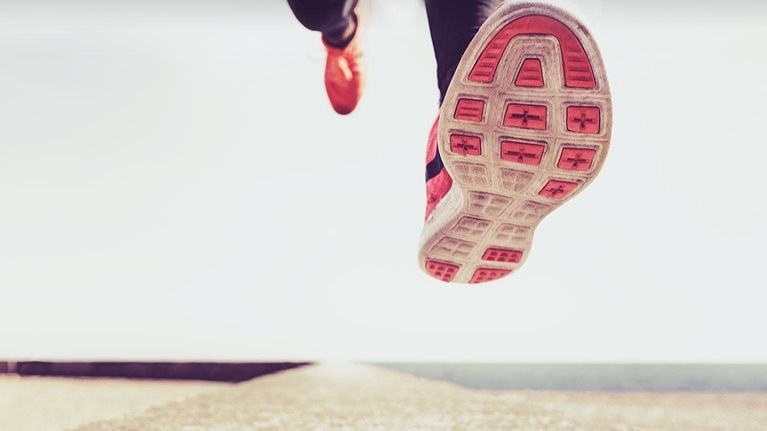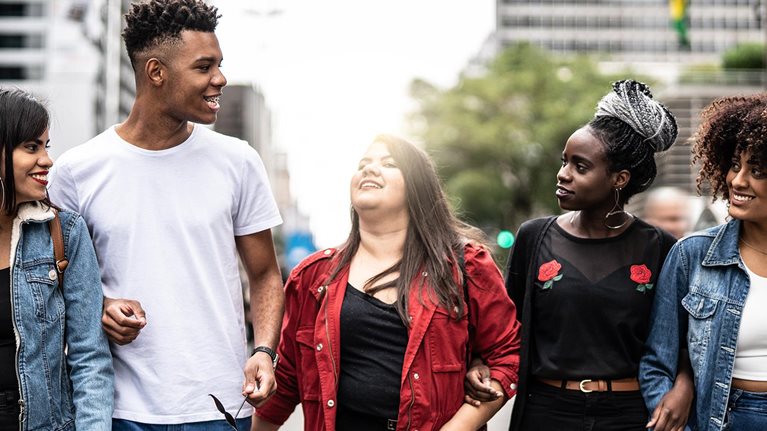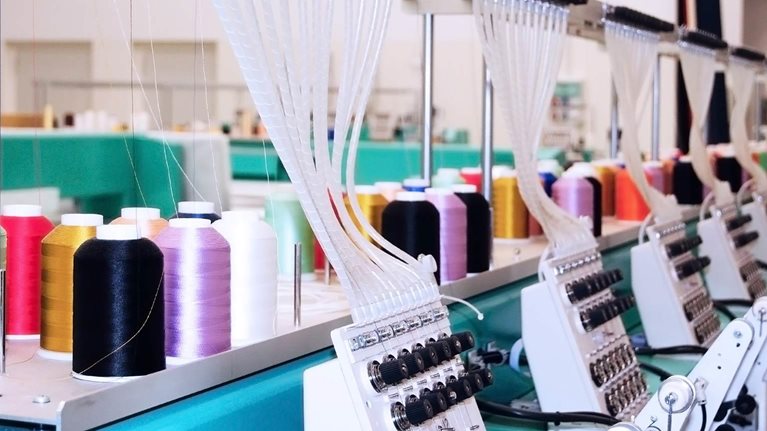Note: This interview was first published in September 2019. In February 2020, Yerdle changed its name to Trove.
As CEO of Yerdle, Andy Ruben believes that providing companies with a platform for buying and selling used goods accomplishes several things at once. A resale platform, he says, allows brands to deepen customer engagement and increase profit while helping the environment by repurposing clothing and other items.
Ruben served as Walmart’s first chief sustainability officer and led the retailer’s e-commerce strategy and private-brand and omnichannel initiatives before cofounding Yerdle in 2012. He spoke with McKinsey’s Simon London about what strategies companies should be pursuing to get into the resale space, and why circular-business models are good for brands and consumers alike.
McKinsey: Tell us what Yerdle’s model is and how it works.
Andy Ruben: We provide brands like Patagonia, REI, and Eileen Fisher with platforms for buying and selling used goods.
In terms of our model, it’s been obvious to me for some time that while retailers focus on selling new items, increasingly, as customers, we’re very happy finding that used item that’s still in great condition instead of buying a new one from a store. As retailers evolve, they will serve customers that way as well.
When we started Yerdle, we worked on a marketplace where people could exchange used items. And what we learned was that the friction in doing so was just too high—posting something, finding the item, trusting the seller of the item.
All along, we were working with brands that would say, “I love this concept, but I don’t want my nice jacket next to a pair of old sneakers. I want a model that is focused on the quality of the brand.”
We pivoted the business roughly two-and-a-half years ago to focus on powering brands so that alongside the items they have always made and sold, they can buy back items that customers no longer need, and then resell them.
When you’re on Patagonia.com and you click on Worn Wear, their used brand, you’re on the brand website that is powered by Yerdle. The brand was looking to move aggressively into the pre-owned space but didn’t have the capacity to take on the work. We came alongside and integrated with them under their brand, but we do all the logistics, the technology, and the program management.
McKinsey: What are the business opportunities created by the disruption of the retail model toward used or rented goods?
Andy Ruben: Let me preface this by emphasizing the amount of disruption occurring with this model. The best estimate over the next three years is $50 billion out of existing brand and retail sales in the US if there was a one-to-one trade-off between people buying used or renting versus traditional ways of buying new items from brands and retailers.
It is a massive market shift whether or not brands and retailers take part. And when a brand is dealing with a disruption that is inherently a shift in how customers buy and what they buy, the choice of sitting this out is to walk away from the customer. I don’t know why a brand would do that.
The same concern applies to cannibalization. Brands wonder, if I promote the pre-owned business, am I going to cannibalize my new sales? My first comment to a brand would be, “Whether or not you are in this market, the customer is buying used items anyway.”
This is a great way to create relationships with customers, and I believe that is what every brand is either after or should be after in a day and age when switching costs are so low. The relationship looks a lot like certified pre-owned, in which companies buy back items, typically with gift cards, from customers who haven’t worn the brand’s jacket in two years.
By offering a gift card to bring that jacket back, you are reengaging that customer and you’re building loyalty. When that jacket then gets sold to a new customer who aspires to the brand, we typically see a marketing return twice as good as a brand benchmark, because you’ve got an item to work with right now that appeals to a group of people who aspire to the brand. This is a smart strategy to increase customer loyalty.
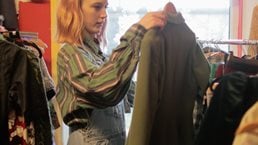
The future of fashion: Sustainable brands and ‘circular’ business models
McKinsey: There’s obviously a shift taking place, especially among younger consumers. What’s happening from your point of view?
Andy Ruben: The reuse mentality jibes with values surrounding sustainability, especially for younger customers. The best data out there shows that 33 percent of Gen Zs and millennials did some type of resale purchase or rental in the past 12 months.
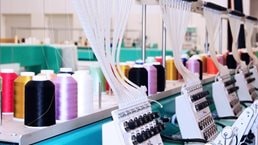
Refashioning clothing’s environmental impact
Participation in that market is growing 40 percent year over year. So we are quickly approaching the halfway point. And it stems from everything else that we see in the economy. It’s a subscription for music, where you are licensing the right to the music. It’s a subscription for other services, for applications. It’s ridesharing, right? It’s your phone, not your car keys, that gets you the transportation you need.
And so those shifts in how we interact, especially Gen Z and millennials, apply to product as well. And there would be no reason I could think of that brands and retailers today wouldn’t be thinking about the implications of that more macro shift.
Here’s an example from my own life: I’ve got two kids at home, a 12- and 14-year-old, and they grow out of jackets every year.
But now I can buy them a pre-owned jacket for $60, not $140. They wear the jacket for a year. When I’m done, I take that jacket right back into Patagonia, which hands me a gift card. Now the cost of a jacket for the year is $20, $25. And every year, I buy my kids the next jacket and just bring it back to the store. And what’s been striking to me is how quickly I can’t imagine buying them new jackets, because this model just makes so much more sense.
And as more of us start to partake in this type of service, the change happens quickly. Much like transportation or hotels and Airbnbs, it’s because it makes so much sense for us as customers. We get more value, higher-quality things with less wait, more freedom.
McKinsey: Reuse is just one of the ways companies can participate in the circular economy. Recycling and repair are others. Have you looked at these practices? Why have you focused on reuse?
Andy Ruben: There are a lot of ways to do circular. The greatest opportunity I see in idle capacity—and that’s idle capacity for economic value, for sustainability value across the board—is our closets.
And the vast majority of cases, items are sitting in our closets not because they need repair. They’re sitting there because we bought them two years ago and we outgrew them. We got bored. We want something new. We forgot we even have them. And so the question becomes, how do we create business models to get those items out of closets and back in use creating value again for the brands and retailers?
Any brand that’s going to do that, it’s important that companies stand behind their items. I think repair is a prerequisite. Most brands we work with have items of a quality level that can be repaired. We can do that, or someone else can do that. But it is important.
McKinsey: What are the resale trend’s implications for sustainability and the environment?
Andy Ruben: Brands talk about how they can feel really good about sustainability reports, where they reduce the waste on how they cut a blazer, right? And they have less waste in the pattern making. And that’s simply 1 percent less bad for an item, but companies still produce 100 billion items a year for seven billion humans.
There is no sustainability model that does not involve a more circular model of keeping things in play. The same holds from a supply-chain perspective.
McKinsey: Companies are paying more attention to the circular economy, believing they have the responsibility to lower the carbon imprint of their clothes. Can you describe how brands are thinking about these economic principles for the future?
Andy Ruben: There is a tension right now for fashion companies in serving customers who want to wear items fewer times but also want to shop with brands that align with their values on ethical leadership and sustainability.
Brands have this conundrum of how to do both things. And there are very few ways through that. One of the benefits we’ve seen in a more circular model is that by allowing customers to buy an item initially and then know that after they wear it three, four, five, six times, they can bring it back—this is just part of the way the brand works.
And then that item gets sold to a different customer, who gets to wear it four, five, six times and brings it back. That’s not just having a sustainability report, focusing on your supply chain, looking at metrics—it’s innovation in terms of the business model. Taking actions that are more customer centric, like these circular reuse models, pay incredible dividends for companies in terms of true sustainability and ethical leadership. That’s an important way to be aligned with today’s customers and their values.
